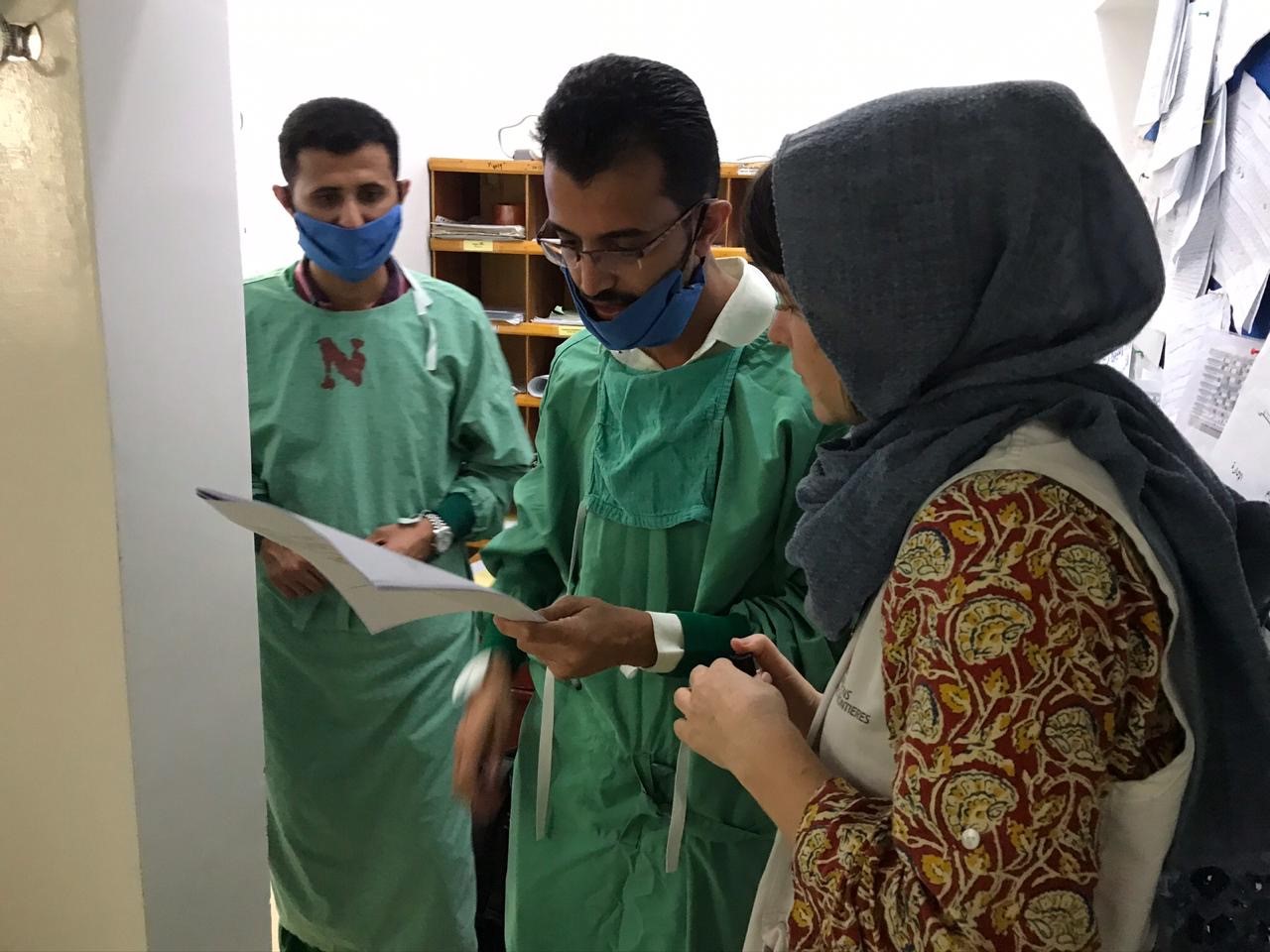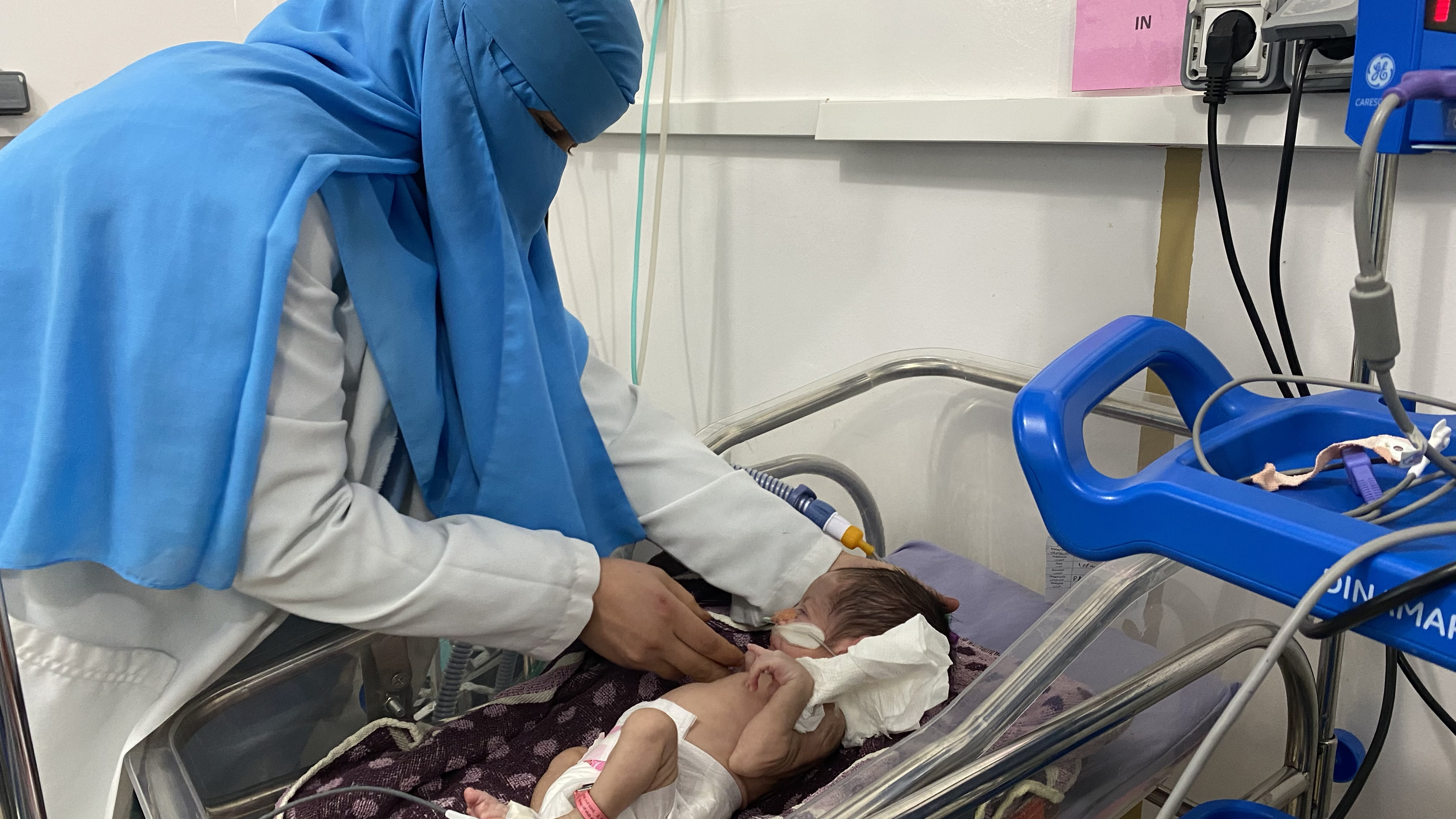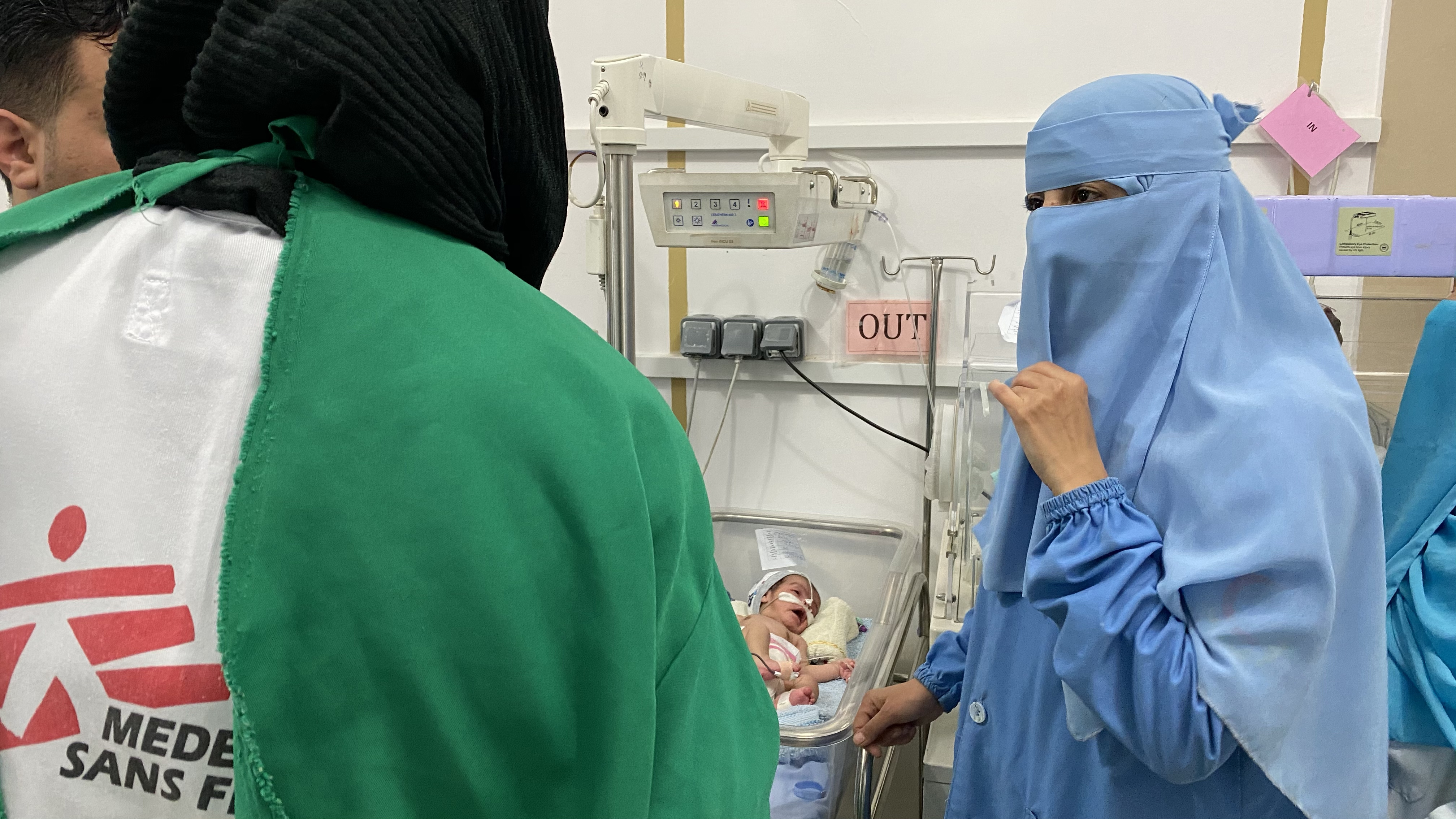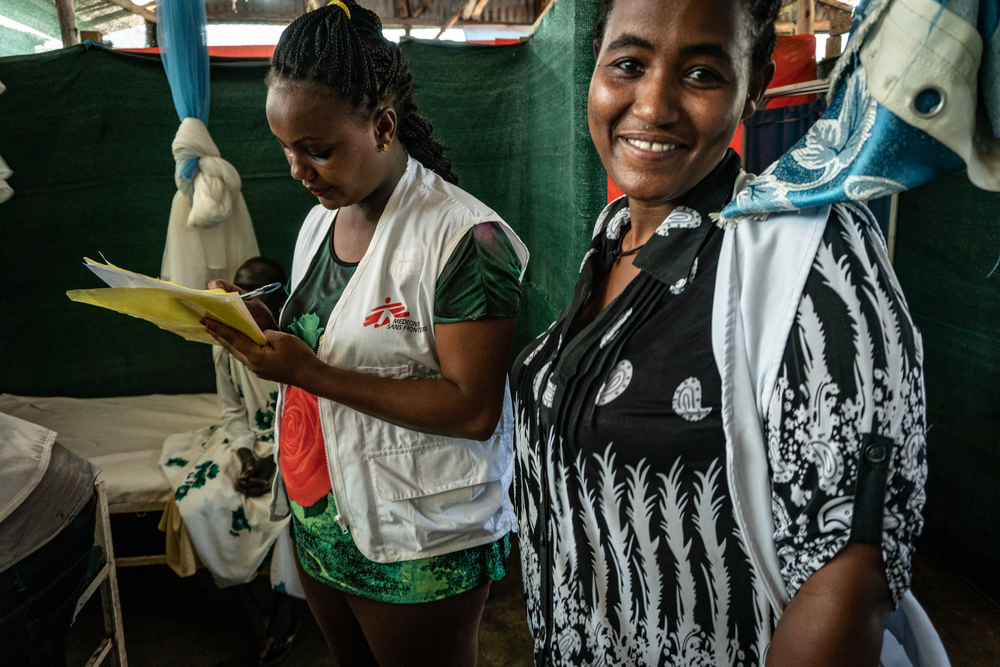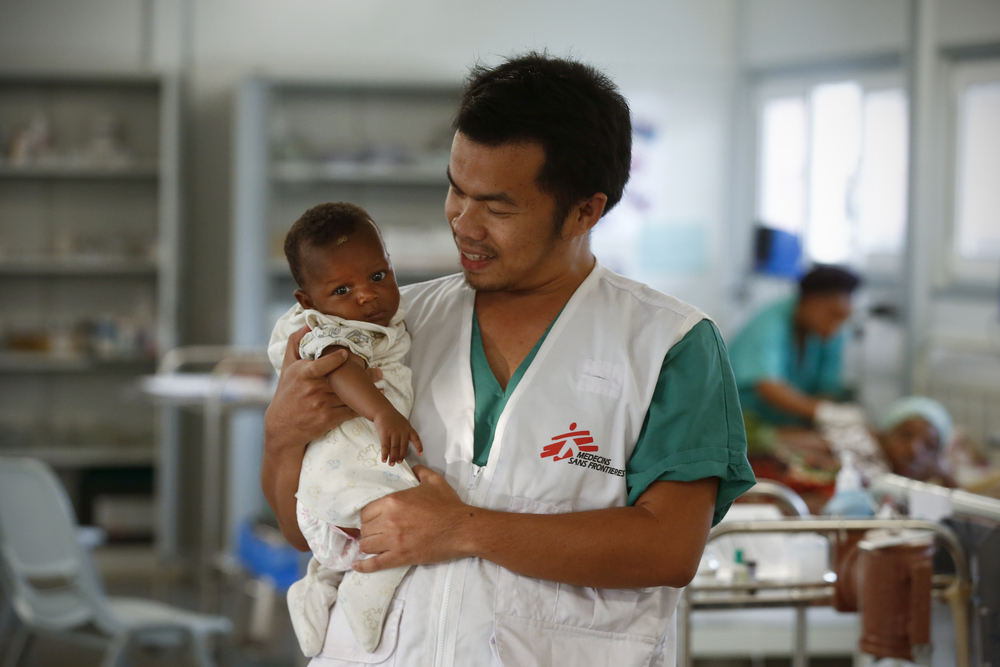Alison Moebus: training and implementing
Respiratory illnesses are one of the major causes of death and illness in children less than five years old worldwide and Khamir, Yemen, is no exception. Babies would present to the hospital in severe respiratory distress caused by bronchiolitis, pneumonia, whooping cough or as a result of prematurity.
Humidified high flow nasal cannula oxygen therapy, or “high flow”, provides slightly more respiratory support than the traditional low flow oxygen therapy you receive through a mask or nasal cannulas. Although high flow is commonly used in the care of sick children in many neonatal and paediatric departments around the world, it is less utilised in low-resource settings, and had not been used before by MSF in Yemen.
There was a lot of excitement among the nurses and nursing assistants about the implementation of high flow and the implications for our patients. The nurses in Khamir are very skilled but the option of respiratory therapy beyond standard oxygen therapy has never been available before. The nurses attended training workshops where we covered topics such as respiratory anatomy and physiology, respiratory assessment and how high flow worked. It was lots of fun and both the nurses and I got a lot of out of learning together.


